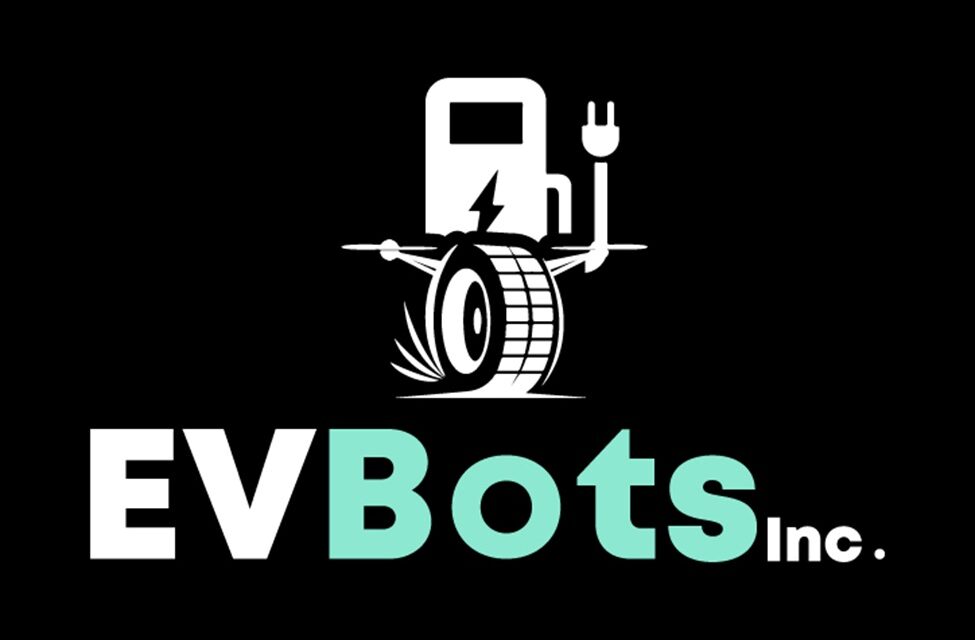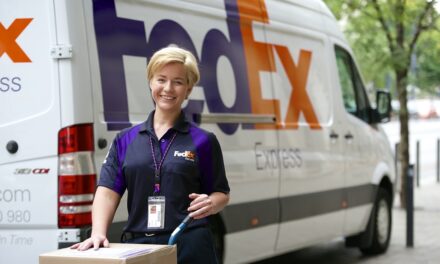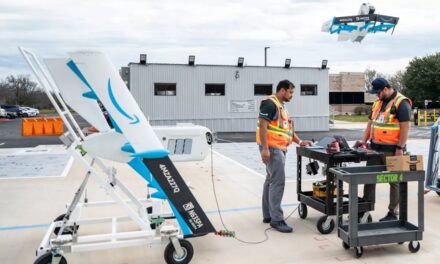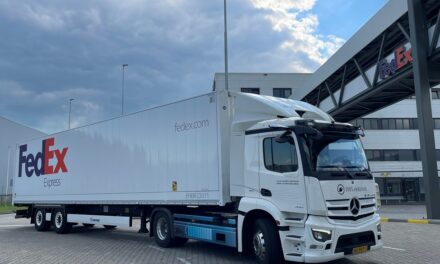
Charged up

Post & Parcel speaks to Virind Gujral, CEO of EV Bots, Inc. who has come up with an innovative cost-competitive way to charge electric fleets.
What is your background in logistics?
From 2002- 2019 I worked for Penske Truck Leasing. As part of the team, I was managing a billion dollars’ worth of diesel trucks – buying and selling to customers and taking care of all the operations. Penske has a huge fleet of around 300,000 tractors and trailers which they lease out to customers.
How did you get into robotics?
When I was working at Penske my son Meer Gujral was really into robotics. And as a result I got into robotics! I used to take him to robotics competitions, and because I’m a mechanical engineer with a couple of MBAs, and passionate about robotics for kids, I became a judge at the World Conference of VEX Robotics.
Also, one day when I was at home I said to my son, who was 13 at the time: hey, since you are into robotics, why don’t you build me a small robot that will put gasoline into my Lexus? And guess what? He built one! It’s small but it worked so I knew it could be done.
So how did you end up moving into the technology field?
I realised I wanted to be working on the technology side rather than the business side of logistics. So I parted ways with Penske and was appointed Senior Vice President of NuPort Robotics Inc.- a company that is developing autonomous trucks in Canada.
In my new role I became even more interested in autonomous operations. Future generations are not going to need to learn how to drive – that’s where we are heading as a society. The future will involve more human-less driving and transportation logistics because it will be more cost effective.
At the same time I began to see more and more electric vehicles being adopted around the world to fulfil sustainability goals.
How did the idea for EV Bots transpire?
One of my colleagues wanted to buy an electric car but she was put off because there weren’t any charging stations at the roadside. So, I said maybe we can do something about it. I recognised there was both an infrastructure problem and an opportunity for a smart solution.
At that point it was a fleeting idea. Then I started looking at it in more detail and discovered that fleets don’t have the charging infrastructure either. I also noticed that drivers are taking about 45 minutes to one hour waiting for chargers to be available. So I did some research and in America drivers are paid around $100,000 – $170,000 a year. I recognised that for the drivers to be waiting around doing nothing is a problem and one that I wanted to solve!
How did you get the concept off the ground?
In 2023 I started going to logistics conferences and talking to people about the idea. They loved it. I discovered there will be 26.4 million electric vehicles on the road by 2030. This translates to a $50 billion industry in the US – and chargers are needed all over the world. This showed me demand is there. I started looking at options of using robotics to solve the charging problem and came up with the idea of using robotics to bring the charger to the EV rather than the other way round. EV Bots was officially launched in April 2023.
How does EV Bots work?
So the driver of the electric vehicle arrives at their depot/fleet parking lot and then logs onto the app and requests to charge that vehicle and leaves. The robot then gets a notification. It picks up the battery and takes the battery to the vehicle, connecting the battery to it to allow it to charge. It then returns to the docking station to pick up other batteries for the next vehicle.
So what can EV Bots offer the industry?
We are offering a unique service where firstly drivers don’t have to wait to charge their vehicles. Secondly, the downtime during the day is less as the robot can keep on charging at night. Thirdly the robot will also be able to provide other services for example checking tyre pressure and tread depth and it can also take pictures to show companies any scratches or any external damage pre and post trip. So, there are a huge number of opportunities for robots. It will keep our customer’s costs down as they will not have to install complex charging infrastructure. All a company will need is one or two slots in the back of a building for a robot and two batteries to be paired with a three-phase plug point.
Do you have a cost comparison?
In the United States I have done some calculations that based on a fleet of 10+ trucks delivery trucks delivery vans we can save companies about $2,000 per month per truck mainly from labour costs.
It is an amazing idea which makes a lot of sense! What are the key obstacles to rolling it out?
The first obstacle is timing, we are at the start of the wave of electric vehicles – there are pockets of them in the US but it will take some time to transition. Fleets are making a headway as customers are more aware of climate change impact. And there has also been a rule change as part of the Advanced Clean Cars II regulations, all vehicles sold in California will be zero-emission by 2035. So things are changing and fleets will need better charging infrastructure one way or another.
Our second obstacle is we need funding so that we can demonstrate this product in a business environment. There are lots of partners we could work with for example car rental at airports – our robots can charge them. Thirdly there will have to be a process change for example if they want to have pre and post trip inspections the charging port will have to be accessible and cars and fleet will need to be parked in such a way that the robot can access it. But I feel confident that these are small things which can be adjusted – as our product will create tremendous value for our customers.
What stage are you at so far?
So we have a prototype but it doesn’t have a robotic arm yet. I have a team of engineers working on it. We are about four months away from testing it out. And then we aim to have a paid pilot very soon after that.
You were part of the start-up pitch at WMX Americas – what was the response to your product ?
WMX was fantastic. I met members of USPS, DHL and Purolator Canada and it was really helpful hearing what people need and using the insights to develop the product. I made some great connections. I also met an entrepreneur from Columbia who is building drones. We are now working together to charge those drones.
How could EV Bots help drone delivery services?
As drone delivery is a growing sector we are looking at how we can charge drones and address one of the key issues for its expansion – the limited range of the battery. So now instead of drones landing and a person going and charging that drone, a person doesn’t need to be there to receive it, the robot will charge that drone automatically. This will give companies more range in order to make more deliveries.
How do you envisage EV Bots’ future?
We are on an exciting entrepreneurial journey and I am enjoying every bit of it. I’m excited about the demand and excited about serving our customers.
About Virind
 With over 30 years of diversified experience in the automotive, transportation, e-commerce, chemical, and steel industries, I am a futurist, inquisitive, and analytical leader who is passionate about autonomous vehicles and technology. I have acquired, deployed, and managed state-of-the-art technologies, managed products with substantial improvements to the bottom line, and supported the advancement of autonomous trucking with advising and funding efforts.
With over 30 years of diversified experience in the automotive, transportation, e-commerce, chemical, and steel industries, I am a futurist, inquisitive, and analytical leader who is passionate about autonomous vehicles and technology. I have acquired, deployed, and managed state-of-the-art technologies, managed products with substantial improvements to the bottom line, and supported the advancement of autonomous trucking with advising and funding efforts.
Currently, I am the President and Co-Founder of a company that is developing robots to autonomously charge electric vehicles, a mission that combines my expertise in AI and robotics with my passion for data and sustainability. I hold an MBA in Marketing, an MBA in Finance and MIS, a BS in Mechanical Engineering, and a certificate in AI and Business Strategy from MIT. I am also a patent holder and a recipient of the SmartWay Affiliate Challenge Award. I thrive on challenges, innovation, and collaboration, and I am always eager to learn and grow.











